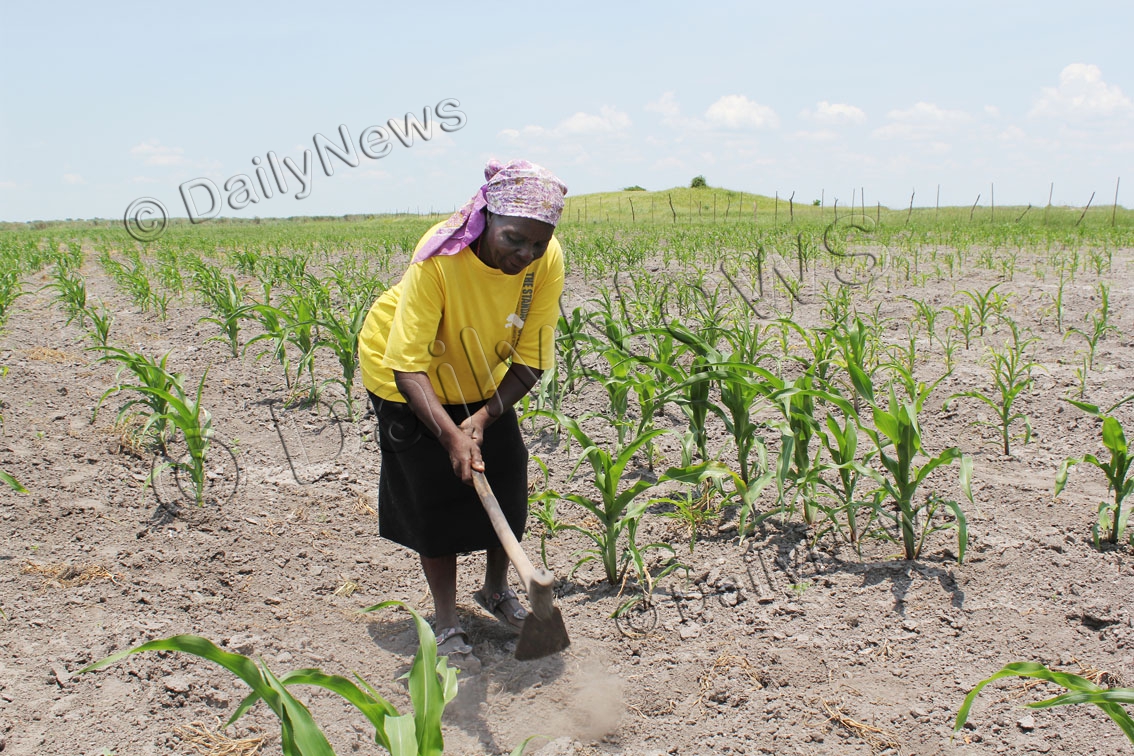Jumbos Dreadful agricultural pests
31 Mar 2019
Until recently, Botswana’s elephant population narrative was music to the ears, symbolising a country at ease with its jumbos. However, in this installment series of stories, BOPA’s Ndingililo Gaoswediwe finds out why some in the country are suddenly singing discordant notes.
Crop farming is part of a Motswana’s DNA.
It is always a pleasure for one to ask during exchange of pleasantries, “ga o a baya tema? (Have you ploughed anything?).
Such has even endured the onslaught of modernisation with government interventions and programmes underpinning efforts not only to sustain but to turn it into a vocation for others.
For some in rural areas, it is their only source of livelihood.
It complements government efforts to keep poverty at bay.
The only problem so far has been crop failure due to persistent droughts.
However, all that can fade into a fairy tale if the human wildlife conflict caused by elephants continues unabated.
They are all over, slowly taking over and threatening to destroy not only their habitat but upsetting the entire ecosystem.
“The damage caused by elephants is beyond description,” says Ministry of Agricultural Development and Food Security spokesperson, Ms Boikhutso Rabasha.
With a herd estimated at 170 000, Ms Rabasha’s concerns cannot be far from the truth.
This is because the jumbos have migrated from their natural habitat invading every piece of land that can yield food and water.
“Elephant population has blown out of proportion and are just too many nowadays and being so large in body size means that they consume a lot of pasture…,” she explains.
According to The National Elephant Centre site, an elephant spends 12-18 hours a day eating.
Each animal can consume up to 300kg per day and drinks between ranges of 60-120 litres/day and 140-200litres/day.
Because they cannot all fit in their designated areas, some of them moved out.
“They have encroached into human settlements,” says Ms Rabasha.
Such encroachment means they go into fields destroying crops and impoverishing farmers.
The most affected areas are North West District, Central District especially Boteti, Mmadinare, Tutume and Bobirwa areas as well as the North East.
These partly puts a strain on the 400 000 hectares of land that is cultivated annually out of which 340 000 hectares is cultivated by subsistence farmers while the remainder is cultivated by commercial farmers.
The situation can be worse if not all the land is cultivated.
For instance in the 2017/18 cropping season, only 268 000 hectares were cultivated.
In monetary terms this can translate into a loss of P564 million invest into arable farming through the Intergrated Support Programme for Arable Agriculture Development (ISPAAD).
“This figure excludes the cost of subsistence and overtime allowances incurred during the execution of this programme,” Rabasha adds.
The elephant problem also threatens to bring to naught government’s efforts for the country to achieve food self-sufficiency.
These include support schemes through which farmers are provided with farm equipment and training.
Ms Rabasha explains that subsistence farmers are the most affected since they constitute the highest number.
The impact is not only felt by arable farmers even pastoral farmers have to endure destruction of water tanks, reticulation pipes, drinking troughs and sometimes their livestock is killed.
The government also incurs losses through extensive damage of cordon fences meant to control livestock movement thereby risking the spread of animal diseases.
Mitigation measures
To mitigate against elephant destruction, Rabasha advises farmers to plough chillies, dig trenches around ploughing fields and bee fencing.
The government trains farmers and the public to co-exist with elephants though programmes such as Northern Botswana Human Wildlife Project.
During a workshop with researchers from the Sustainable Futures in Africa Network on human-wildlife interaction last August at Mmadinare, residents recommended, “to mitigate the situation, some residents suggested culling to control the numbers which they complained were way too high for the area, while others called for the setting up of an elephant abattoir…”
In addition, attendees suggested that government should set up an educational park where residents could learn about various subjects on elephants to promote co-existence between elephants and people.
Elephant Population
At the turn of the 20th century, there were a few million African Elephants and about 100 000, Asian elephants. Today, there are an estimated 450 000 - 700 000 African elephants and between 35 000-40 000 wild Asian Elephants.
www.panda.org says African countries with the highest densities are Botswana, Zimbabwe, Tanzania, Kenya, South Africa and Zambia. BOPA
Botswana
170 000 (Department of Wildlife and National Parks)
Zimbabwe
84 000 (www.herald.co.zw)
Tanzania
43 000 (phys.org)
Kenya
34 132 (www.poachingfacts.com)
South Africa
24 000 (www.bbc.co.uk)
Zambia
21 000 (christopherhepworth.com)
Source : BOPA
Author : Ndingililo Gaoswediwe
Location : Gaborone
Event : Interview
Date : 31 Mar 2019






